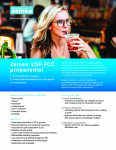Juice labels ‘blur the distinction’ between drinks recommended for children & those with added sugar

“Clear and transparent labeling is essential to provide information to consumers and support caretakers’ efforts to ensure healthy diets for young children. Yet, we identified numerous labeling practices that obscure the true nature of drinks purporting to contain juice and would make it difficult for consumer to identify healthier products,” researchers led by Jennifer Pomeranz, an assistant professor of public health policy and management at NYU School of Global Public Health, report in a study published online April 16 in the American Journal of Public Health.
They explain in the study that analysis of the primary display panel of 39 fruit punch flavored drinks with the amount of juice ranging from 2% or less to 100% led them to conclude “labeling practices appear to be designed to blur the distinction between drinks recommended for children and those containing added sugar or nonnutritive sweeteners.”
For example, they note that while FDA requires 100% juice products to clearly label the addition of sweeteners, the same standard does not apply to beverages with less than 100% juice.
As such, they found many nutrition claims on beverage packages that they argue could confuse shoppers and lead them to believe they were purchasing something healthier than they are.
This conclusion is based on the finding that 60% of the products reviewed that contained added sugars making “positive statements about sweeteners, such as ‘no high fructose corn syrup,’” according to the research. In addition, stevia sweetened beverages included claims such as ‘no artificial sweeteners’ or ‘no sugar added,’ while drinks across all categories included vitamin claims, even when the nutritional benefits came from fortification and not fruit juice.
These claims likely could lead consumers to believe that the products do not have nonnutritive sweeteners, and the only way for consumers to be sure is if they had knowledge of nonnutritive sweetener chemical names and reviewed the information panel, according to the study.
Imagery of fruit also decorated 38 out of the 39 products, even though many products lacked fruit juice or juice from the fruit pictured, the researchers report. While this is allowed under current FDA regulations, the researchers noted that “it is unclear whether consumers understand that fruit flavors, names and images do not necessarily reflect fruit or juice as an ingredient.”
While many of these practices likely obscure from consumers the true nature of children’s beverages, many of these marketing techniques are legal and follow existing FDA guidelines.
'FDA has the authority to revise a wide range of labeling requirements'
To help consumers select healthier options and follow guidance from public health advocates issued in September 2019 that recommends children younger than 5 years not drink beverages with added sugars or nonnutritive sweeteners and limit juice, the researchers recommend FDA revise its labeling guidelines for juice, juice beverages and flavored water.
“FDA has the authority to revise a wide range of labeling requirements, including standardizing the common and usual names for products, differentiating between ingredient versus flavor disclosures and directly addressing misleading labels,” the researchers argue in the study.
Specifically, they call on FDA to standardize statements of identity so that they are visible and uniform within product categories. They also suggest the agency standardize PDP labeling of added sweeteners for all beverages and require disclosures of nonnutritive sweeteners.
Likewise, they argue, FDA should update regulations to distinguish diluted juices without sweeteners from other products with sweeteners that currently can make similar claims.
The researchers conclude these changes, including more “transparent product labeling, could also help consumers identify healthier products, and may encourage manufacturers to produce a wider range of them.”















